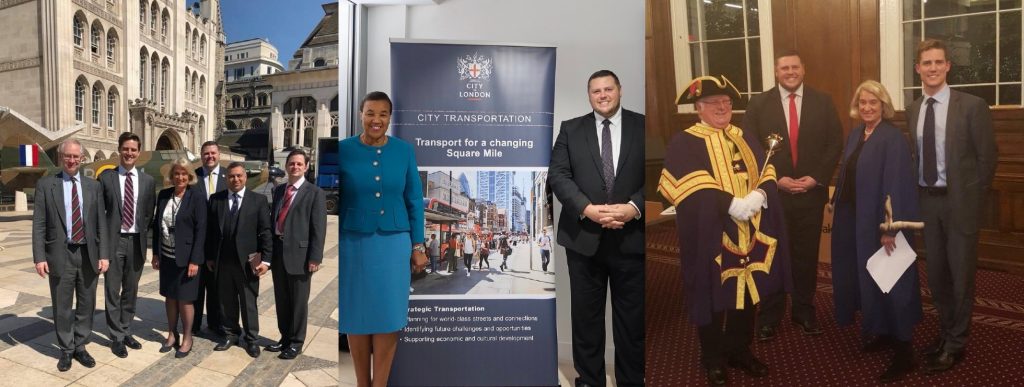You can visit our Bishopsgate Ward Team website here.
The City of London is divided into 25 wards and 125 members are elected to represent them. Each ward elects one Alderman and two or more Common Councillors, depending on it’s population, totalling 100 Common Councillors and 25 Aldermen. Full City-wide elections are held every four years with By-elections and Aldermanic elections in between. Because the City has a relatively small number of residents compared to City workers, it has two categories of voters: resident and business. The number of votes each business is allocated is based on the number of full time employees they have working in each ward.
The City of London Wards find their origins in the Middle Ages. At the time, small areas within a city were able to act as self-governing communities with their own assemblies (Wardmote) and systems of public order (elected Beadles). The Romans built a defensive wall around the city of Londinium (London), which included 7 gates as a way to enter and exit the fortified town. These gates were Aldgate, Bishopsgate, Moorgate, Cripplegate, Aldersgate, Newgate and Ludgate. Sadly Bishopsgate, like many of the gates, was demolished in 1761.
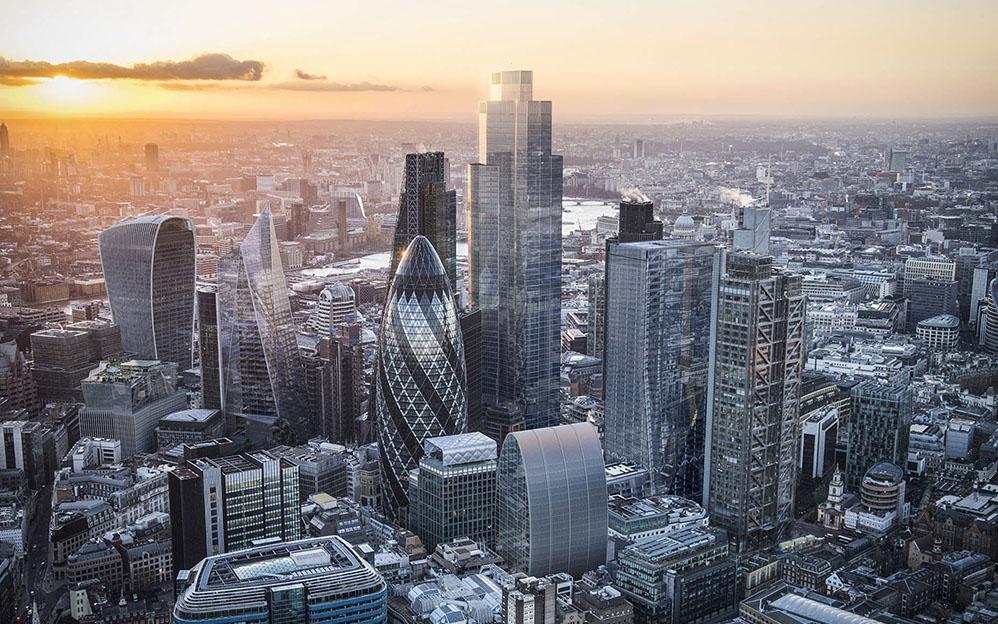
Bishopsgate elects 1 Alderman and 6 Common Councillors. 3 represent Bishopsgate Within and 3 represent Bishopsgate Without, referencing the historic link to the gates within the wall and without (outside). Bishopsgate was referenced as ‘Porta Episcopi’ in the Doomsday book.
The Court of Common Council is the ‘town council’ of the City of London. Its work includes both the work of an ordinary local authority council and that arising from its historical status and tradition. It works through committees, like any other local authority, but it is unique in that it is non-party political. The City of London Corporation’s reach extends far beyond the Square Mile’s boundaries and across private, public and voluntary sector responsibilities. This, along with its independent and non-party political voice and convening power, enables us to promote the interests of people and organisations across London and the UK and play a valued role on the world stage, as an Ambassador for financial and professional services.
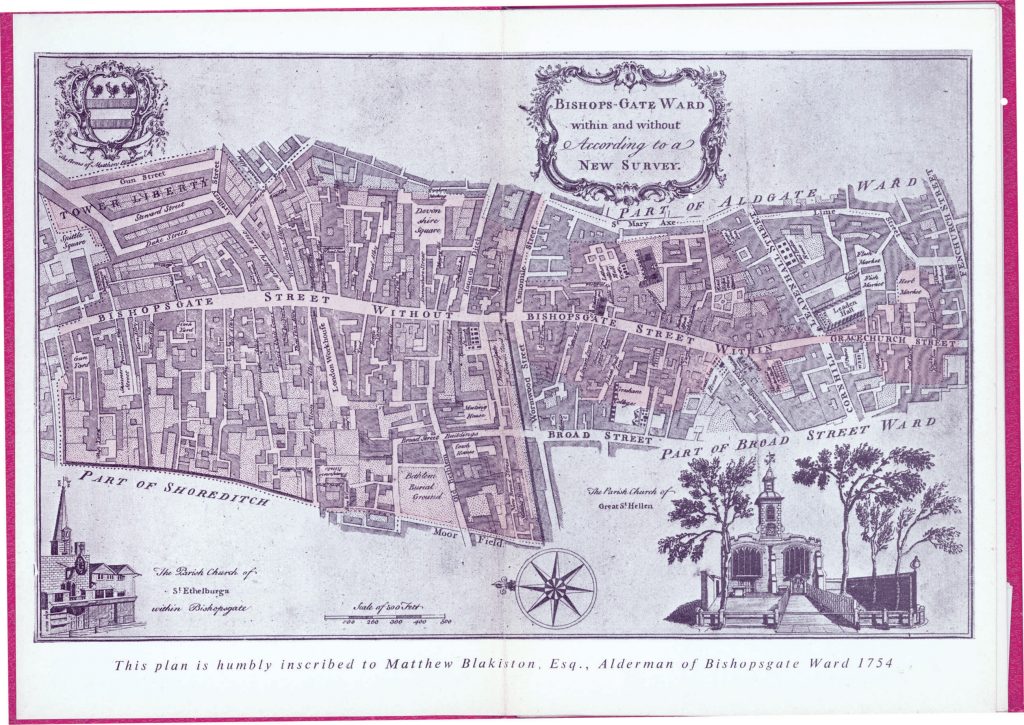
The Bishopsgate Ward map can be found here
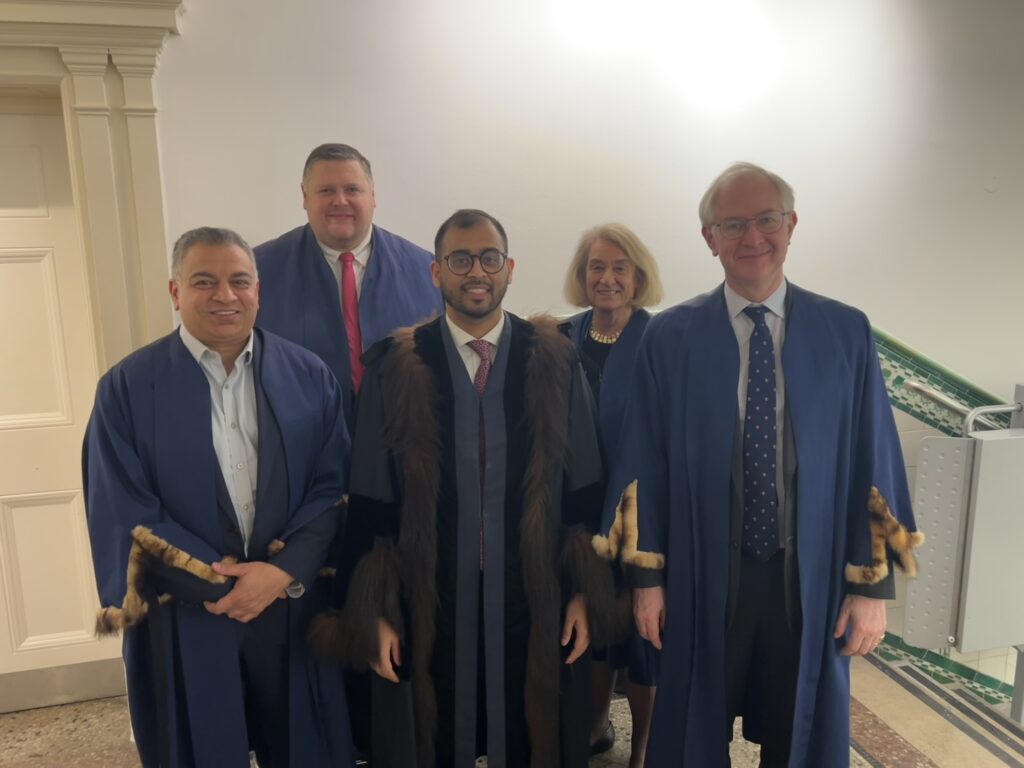
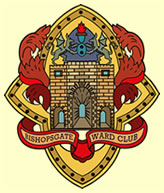
Founded in 1790, the Bishopsgate Ward Club was originally a forum for the merchants, traders and other interested parties of the Ward to express their views to the Aldermen and Common Councilmen, linking them to the governance of the City. In modern times the Ward Club has become a social organisation, promoting community service, good fellowship and interest in the traditions and institutions of the City.
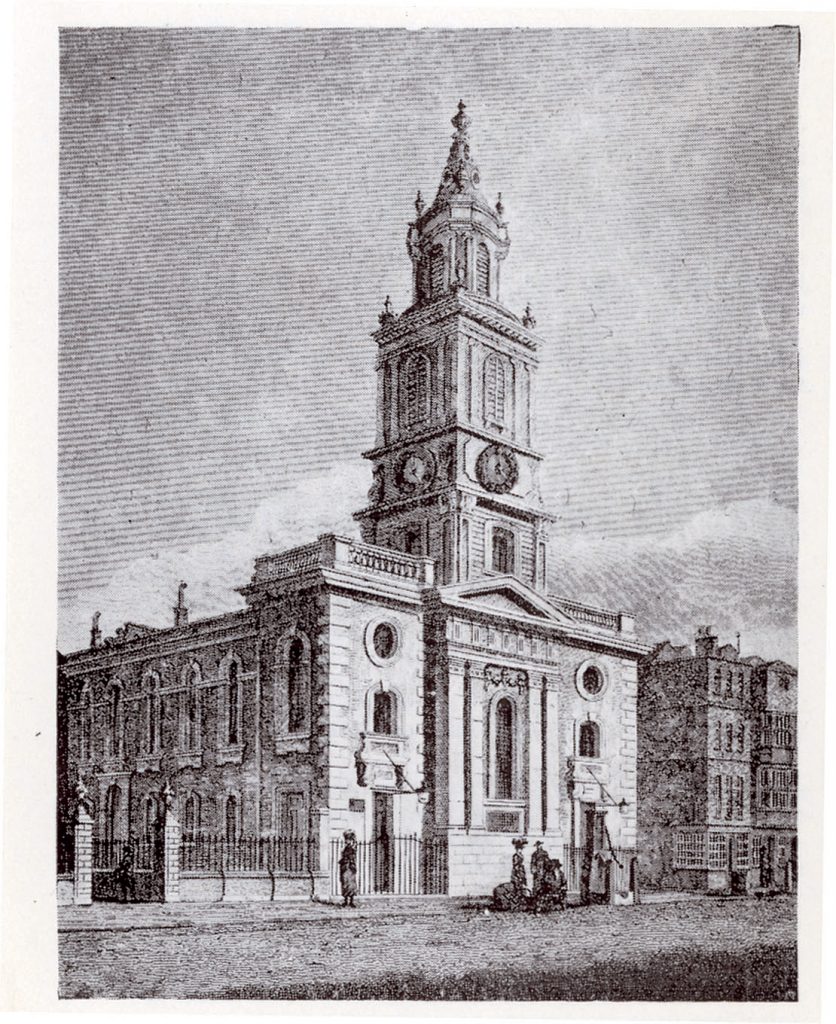
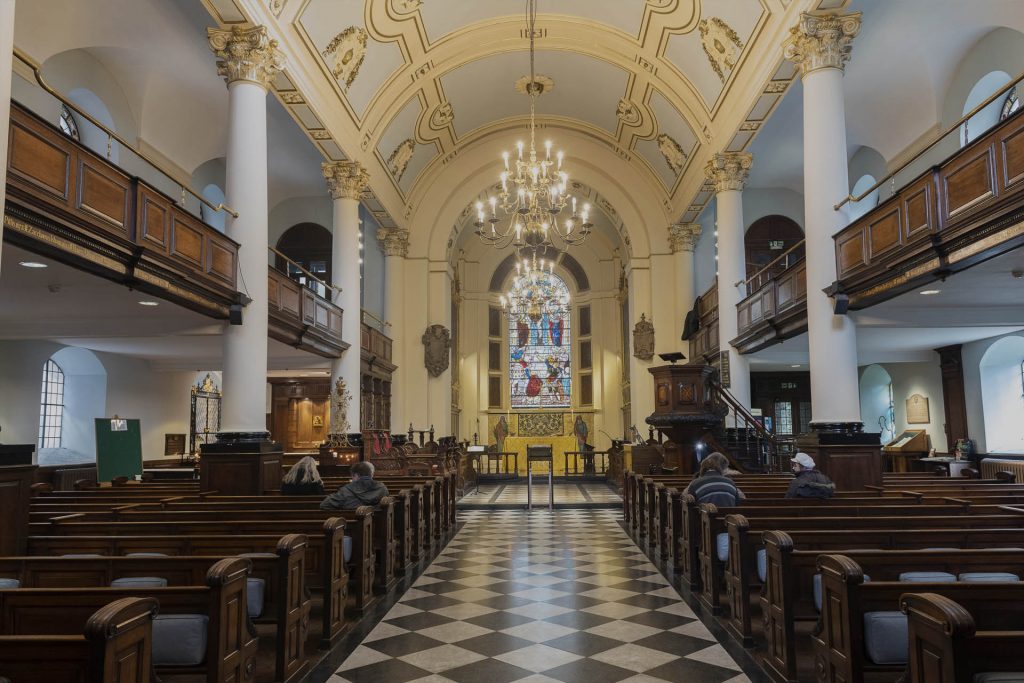
Ward Church: St. Botolph-Without-Bishopsgate
Christian worship has probably been offered on the Church site since Roman times. The original Saxon church, the foundations of which were discovered when the present church was erected, is first mentioned as “Sancti Botolfi Extra Bishopesgate” in 1212. Sir William Allen, Lord Mayor (1571-2) who was born and buried in the parish marked his mayoralty by repairing the Church at his own expense. Although the church survived the Great Fire of London (1666) St. Botolph’s had by the early eighteenth century fallen into disrepair and the decision was made to build a new church. The old church was demolished in 1725, and the present church, the fourth on this site, was completed in 1729 to the designs of James Gould, under the supervision of George Dance. It is aisled and galleried in the classic style, and is unique among the City churches in having its tower at the East End, with the chancel underneath. The font, pulpit and organ all date from the eighteenth century.
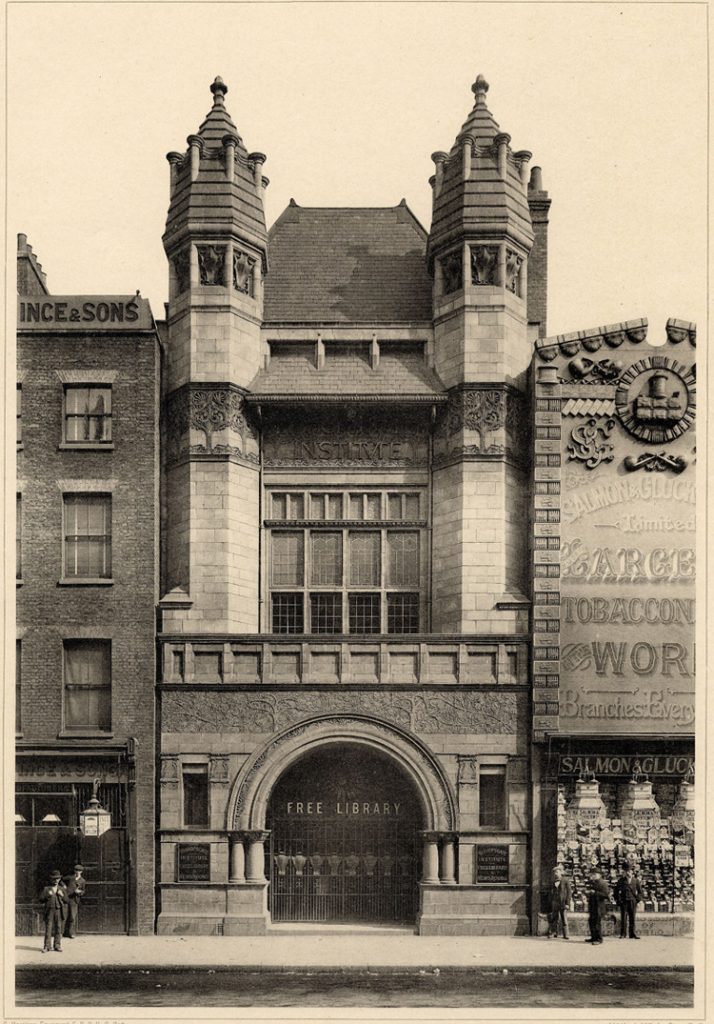
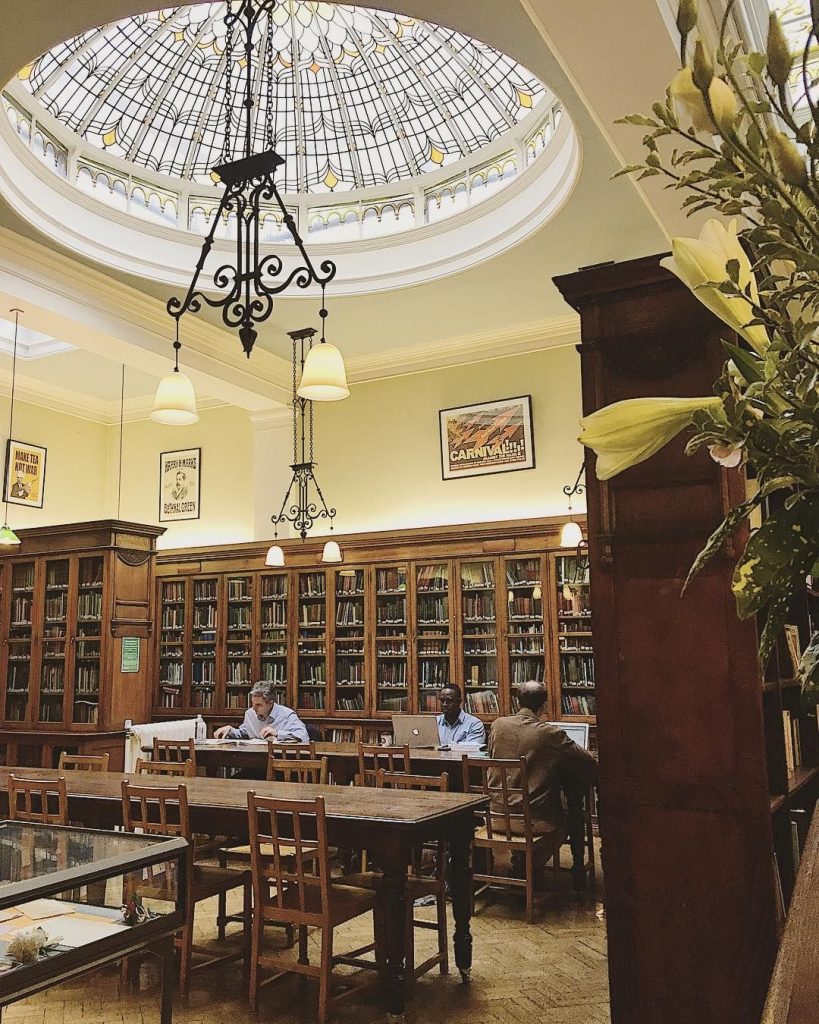
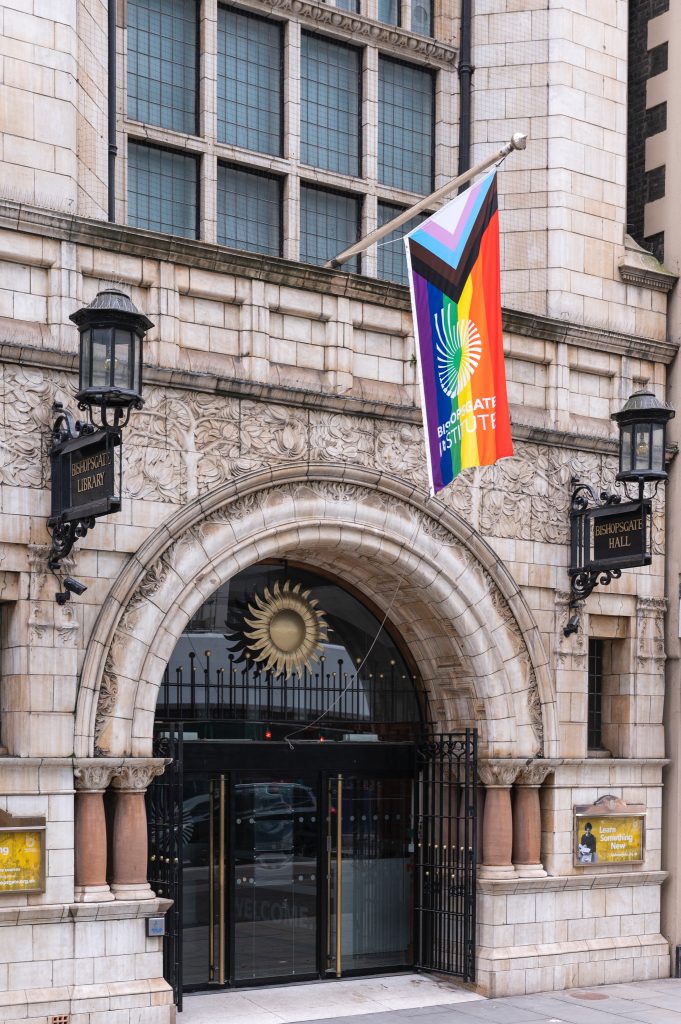
Bishopsgate Institute is a cultural institute established in 1895. It offers a cultural events programme, courses for adults, historic library and archive collections and community programme
The original aims of the institute were to provide a public library, public hall and meeting rooms for people living and working in the City of London. The Great Hall, in particular, was erected for the benefit of the public to promote lectures, exhibitions and otherwise the advancement literature, science and the fine arts. It was built using funds from charitable endowments made to the parish of St Botolph-without-Bishopsgate. These had been collected by the parish for over a period of 500 years, but a scheme agreed by the Charity Commissioners in 1891 enabled these to be drawn together into one endowment. Reverend William Rogers (1819–1896), rector of St Botolph’s and a notable educational reformer and supporter of free libraries, was instrumental in setting up the institute and ensuring that the original charitable aims were met.
